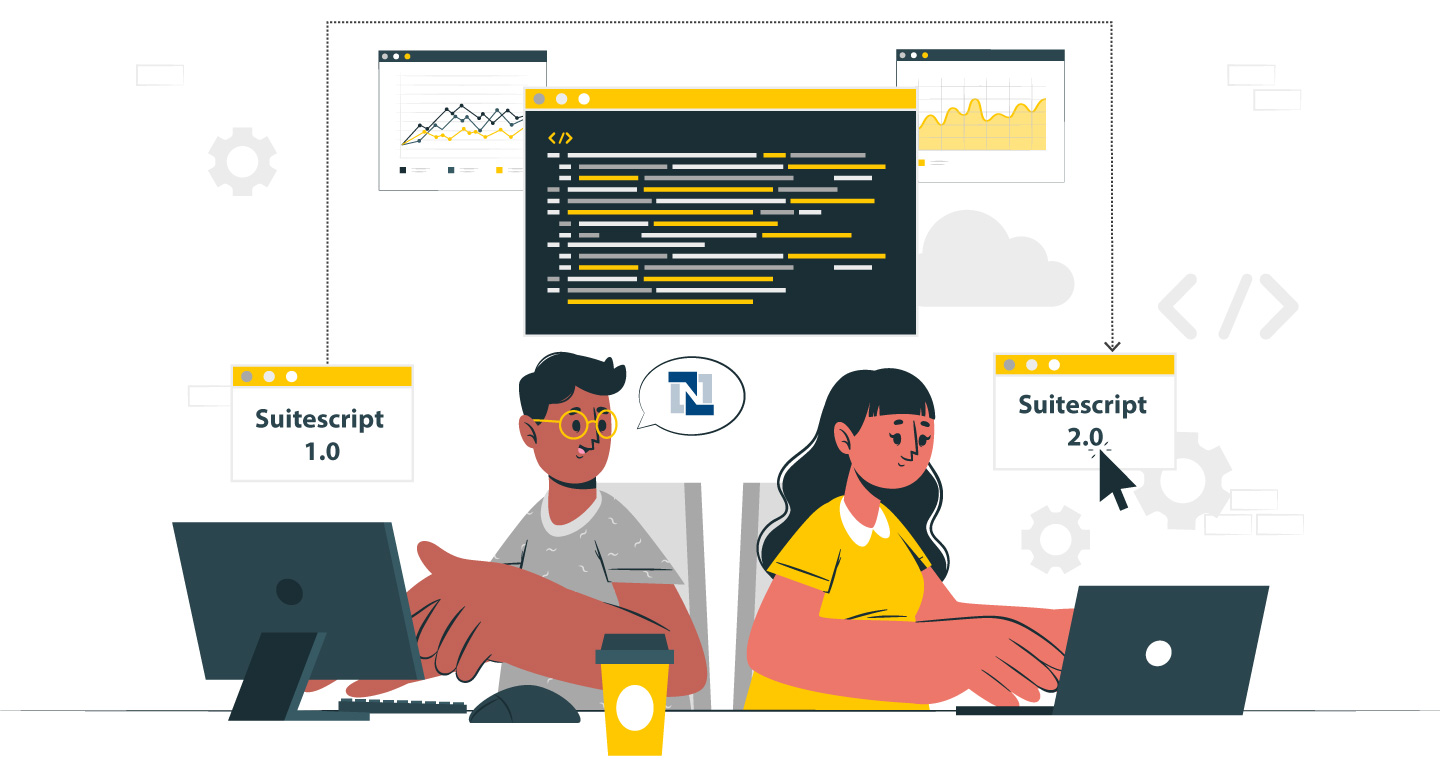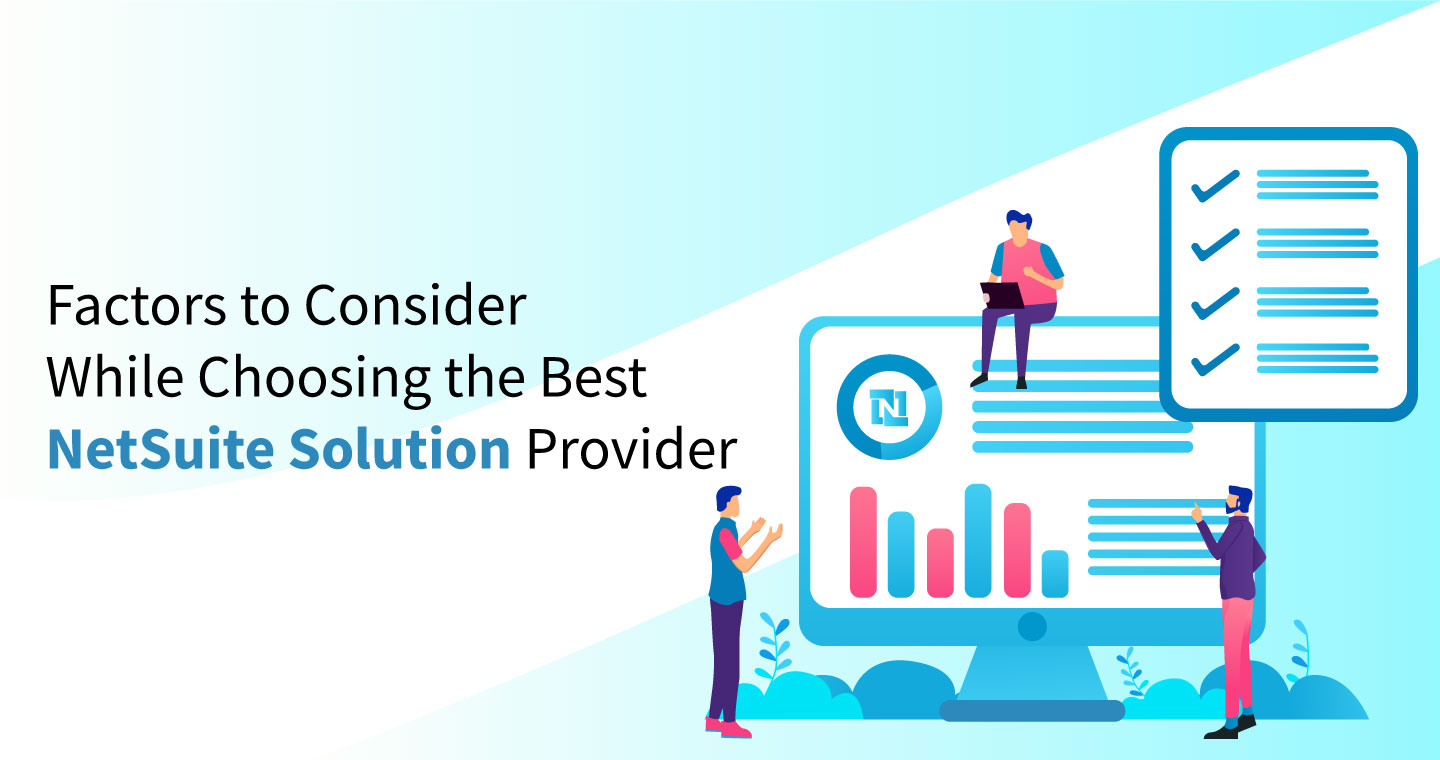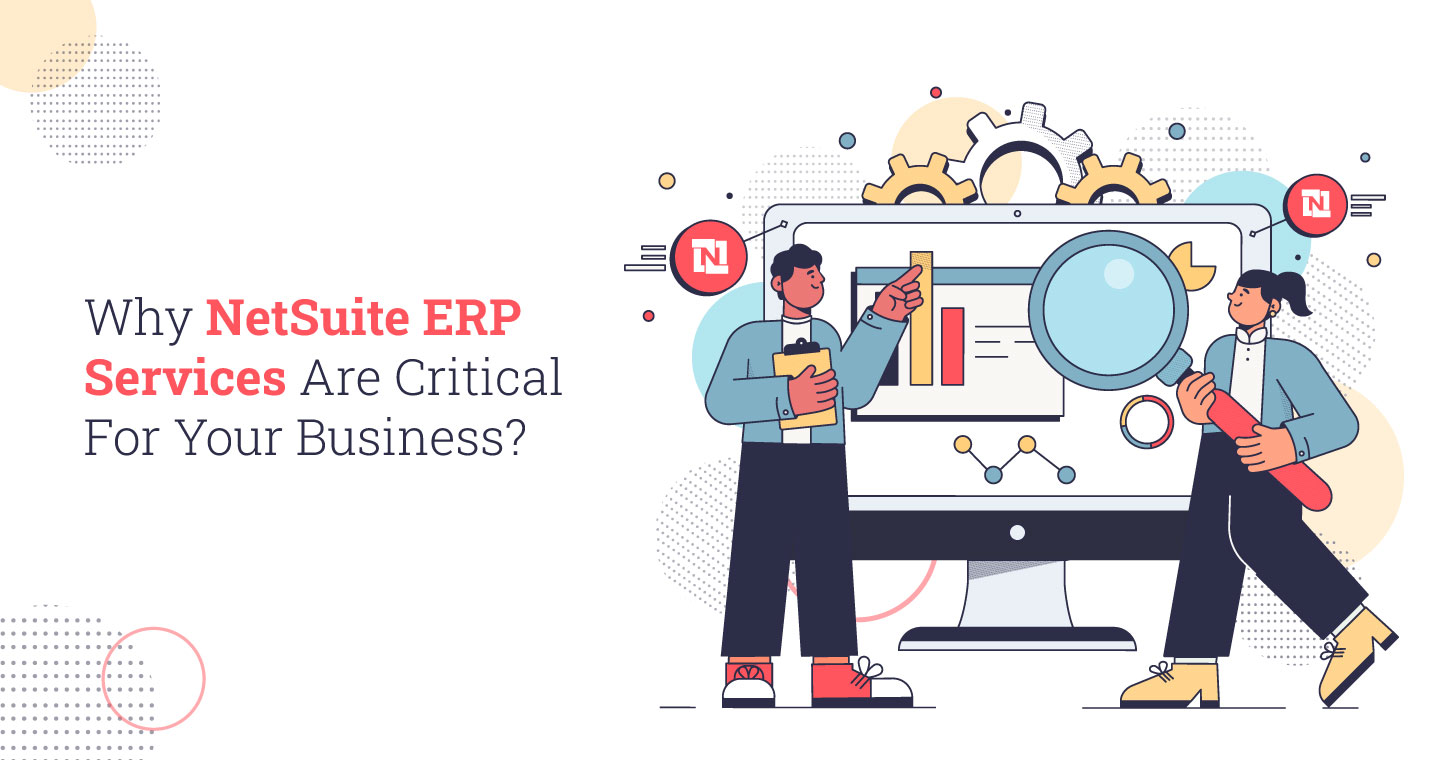Data importing is quite common to most activities in NetSuite. But at the same time, pulling your data into the ERP system is one of the most challenging and overwhelming tasks that you would come across. NetSuite is not an exception to this notion.
Pulling data becomes quite important when you are adding a specific module or migrating from legacy ERP. It also takes center stage when you are wiping existing data. There is no denying the fact that pulling data is a great tool for growing a set business.
But just like any web-based solution, you can face issues while pulling data. Here are some of the common issues that you would usually encounter while pulling data in the NetSuite platform.
Common Issues With Pulling Data In The NetSuite Platform:
- Exporting meaningful data for executing analysis
- Updating transactions that are multi-line
- Editing and designing a plethora of records simultaneously
- Designing automatic integrations with third-party platforms
- Application of specific formulas to determine the values related to fields
So as you can see, these issues are quite complicated in nature. Although there is a wide variety of required fields, NetSuite users can perform data import in a great number of ways.
Common Ways Of Data Import In NetSuite Are:
- Microsoft Excel File
- Comma-separated Value File or a CSV File
- Integrations with the help of APIs
Always remember that each of these import alternatives would develop different types of records with an internal ID. But note that the data remains the same. So with these things in mind, Let’s take a glance at some of the common ways to carry out NetSuite match bank data import:
Stay Organized
If you want to know the NetSuite transaction types along with data import, you should stay organized. Importing data is not always simple. If you go wrong in a single step, there is a chance that all the files will get corrupted. Corrupted files are the last thing you want while importing data. Here are some things that would help you to stay organized while importing data.
- Identify the type of import you require. Are you on the lookout for updating existing files or augmenting new records? These may seem simple questions but you can face huge issues if not done correctly. In short, you have to always be aware of your import data.
- You have to develop the record in the user interface first. Subsequently, you have to go through each step to produce it in the CSV import.
- Comprehend the type of information NetSuite requires to execute the action. Also, assess whether you need any specific sort of customization or not.
- You have to identify the particular records that you are editing. If you want to develop new items in the system, it is important to import the CSV records for each type. Note that the amount of CSV reports varies on the basis of professional services and offered products.
- You should be aware of your role permissions to facilitate NetSuite customer payment import seamlessly. You should always be eager to examine what you are trying to import in the UI first. In case you are unable to upgrade the value, you would require higher permission to do so.
Ways To Import CSV Transaction Data In NetSuite
For NetSuite import bank transactions, you should always deploy the import assistant. You have to go to setup and then import. After going to import, you have to navigate to export and finally import CSV files. You have to describe whether the import would augment new records or update the existing ones.
How to import data into NetSuite is a common question asked by many people. But once you know the process to map the CSV fields to the NetSuite fields, the process becomes easier and simpler. You can also save import jobs to execute later and reuse them for the purposes of mapping. It is quite imperative to validate the data you have imported.
The Flow Of Importing CSV In NetSuite:
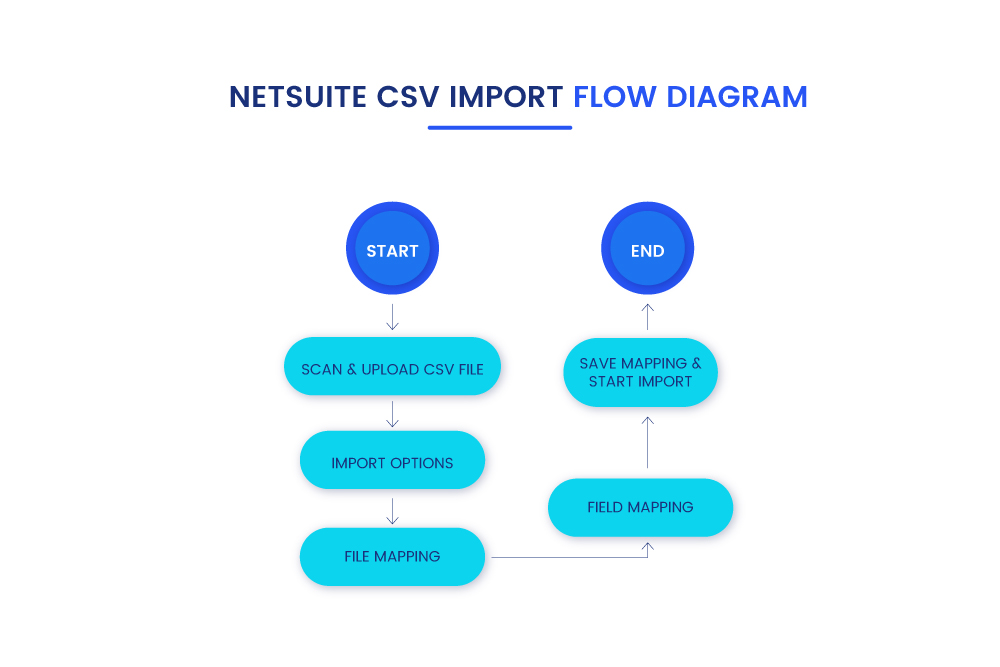
It is a common phenomenon for many organizations and businesses to store important data in CSV or Excel files. Note that these files are then converted into customized forms in the NetSuite platform. Quite interestingly, the NetSuite CSV Import templates would be of great help if you encounter issues.
The flow Of Importing CSV files in NetSuite With Import Options:
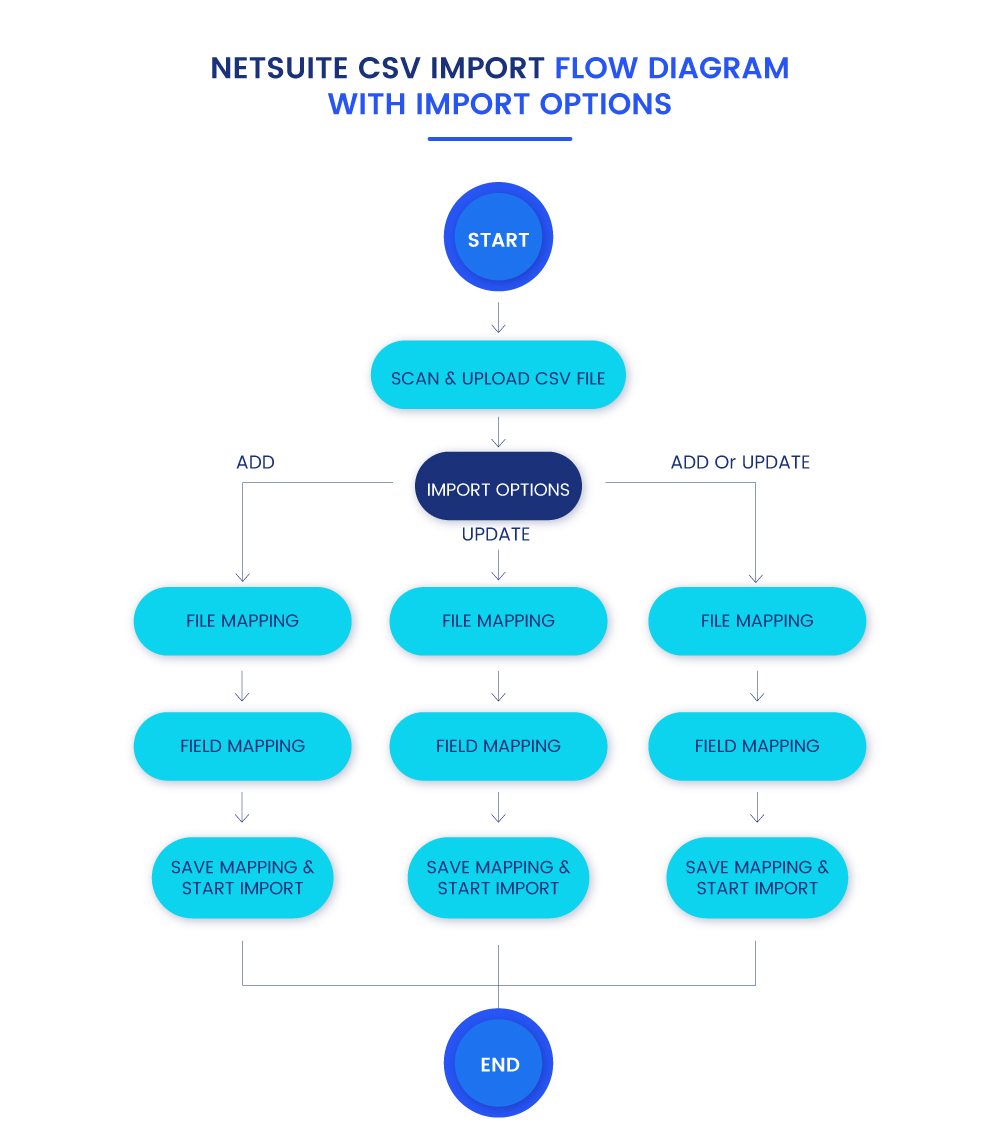
Always remember that the CSV import procedures assist with the prevention of errors and saves a great deal of time. Data can be updated or augmented to all the records synchronously which eliminates the requirement of entering them manually.
Ways To Import Bank Data
Always remember that NetSuite import transactions are an integral component of importing bank data. Note that the system is not connected directly to your bank. So if you want to know the steps by which you can import credit card transactions into NetSuite, note that it can be executed either manually or automatically.
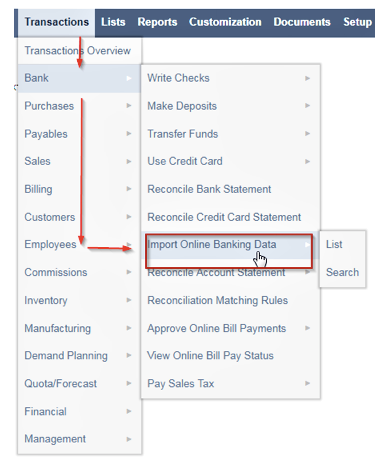
Any variety of bank statements or journal entry imports can be easily downloaded and saved in the CSV file format. It is also imperative to follow the right strategies to make sure that the financial data has been transferred correctly.
- Always opt for a trial run before importing all the records
- Make sure that the data is properly validated especially when you are dealing with NetSuite journal entry reports
- Once you are done with data validation, you are all set to commence with the upload process

Conclusion
So as you can see, mapping is undoubtedly one of the difficult tasks in automation as there is no room for errors. Opting for a NetSuite Implementation partner is always a good idea. But then, you have to be aware of the proper ways to map and import data. Comprehending the import process and the requirements of the systems is the first hurdle you would face. If you negotiate this challenge successfully, you would be able to seamlessly execute transactions.


